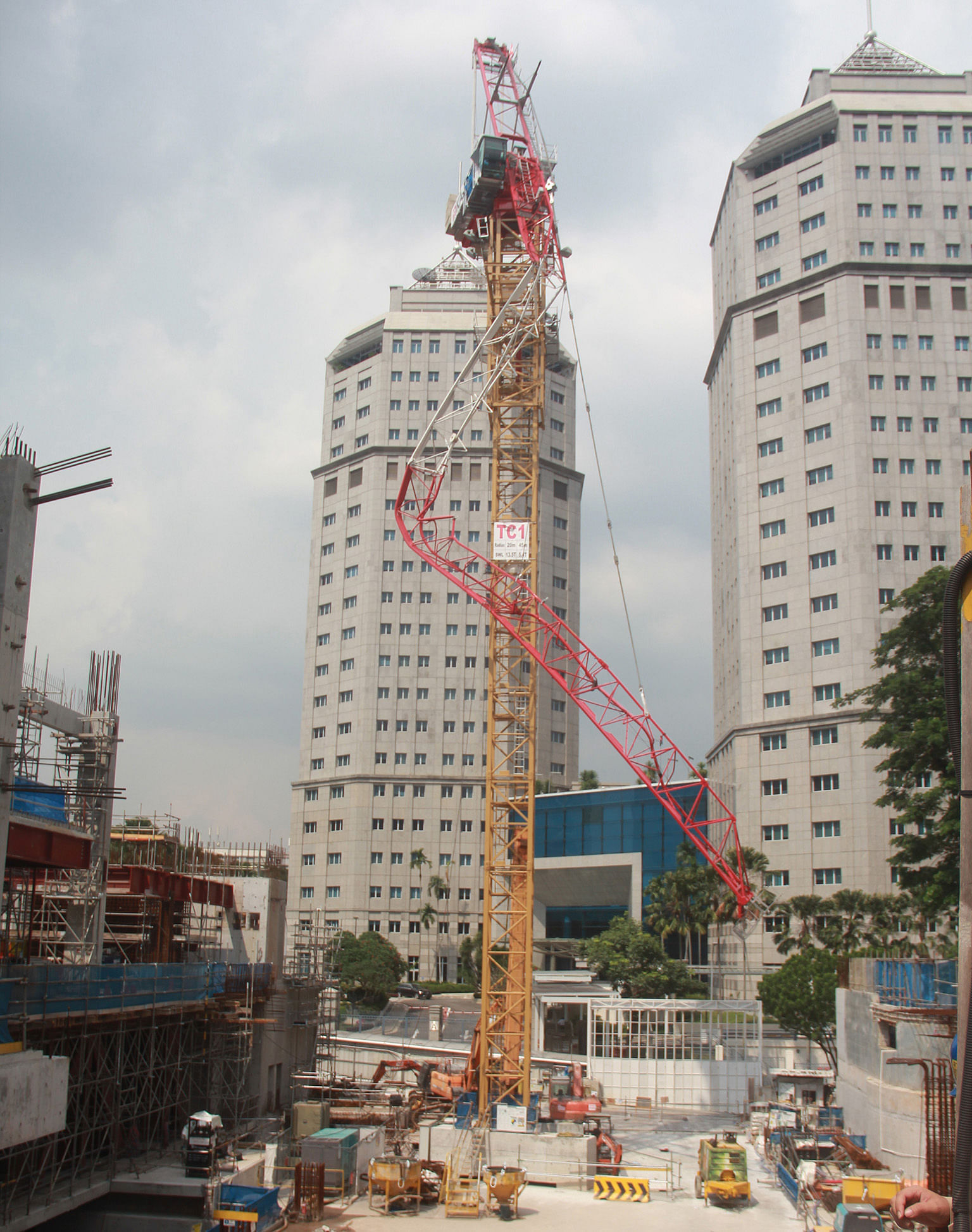The Ministry of Manpower (MOM) has called for changes in the way a component of tower cranes used at construction sites should be handled, after an incident last year led to the death of one worker and an injury to another.
Erection ropes used at tower cranes should be removed or disconnected and stowed securely, said MOM, even as some crane manufacturers allow these ropes to remain on cranes during operations.
This was among the key recommendations made in a report released by the ministry yesterday, meant to encourage the construction industry to adopt lessons learnt from the accident and operate cranes more safely.
On Nov 4 last year, a tower crane failed at a worksite in Tan Tock Seng Link as it was lifting around 300kg of scaffolding material.
The worksite, occupied by Kajima Overseas Asia, is for an upcoming rehabilitation hub in Novena that will be part of Tan Tock Seng Hospital.
The cause of the failure, said the report, was an entangled erection rope preventing the horizontal beam of the crane, called a jib, from being lowered further.
When the rope eventually gave way and its hold on the jib released, the jib then jerked downwards into free fall, although it was held back by another rope and thus buckled, said the report, detailing the sequence of events that led to the fatal accident.
The report said the buckling happened after the jib started to fall and was not the cause of the accident. The crane was also not overloaded at the time.
The load and the hook block it was attached to fell and hit two workers.
The Straits Times reported last year that the worker who was killed was 28-year-old Indian national Muthaiyan Velmurugan. The injured worker, who had a leg fracture, was a Bangladeshi, then 35.
Erection ropes are typically used to hold and balance the jib in position for it to be installed on the top of the crane.

The report noted that while some crane manufacturers recommend erection ropes be removed after the jib is installed, others do not, as not removing the ropes makes maintenance of the jibs and dismantling of cranes easier.
For ropes that are left on tower cranes after the jib installation, support brackets are often used to contain and guide the ropes to their proper resting positions, and prevent excessive dangling when the jib is raised, said the report.
MOM believes this is the first recorded instance of such a tower crane failure involving erection ropes in the world.
"Hence, it is critical to establish the learning points from the incident to prevent recurrence," said the report.
After consulting the industry, the ministry recommended that erection ropes should be removed or disconnected and stowed securely on the crane after the jib installation, in spite of the advice of some manufacturers.
"This is to eliminate any risk of accidental entanglement of the erection ropes with any fixed structure of the tower crane as the erection ropes will not be in tension even when the jib is lowered."
It added that where erection ropes are not removed or disconnected, any support brackets should be designed well to prevent unintended slippage during the raising and lowering of the jib. Regular testing should be done to check if this is so.

